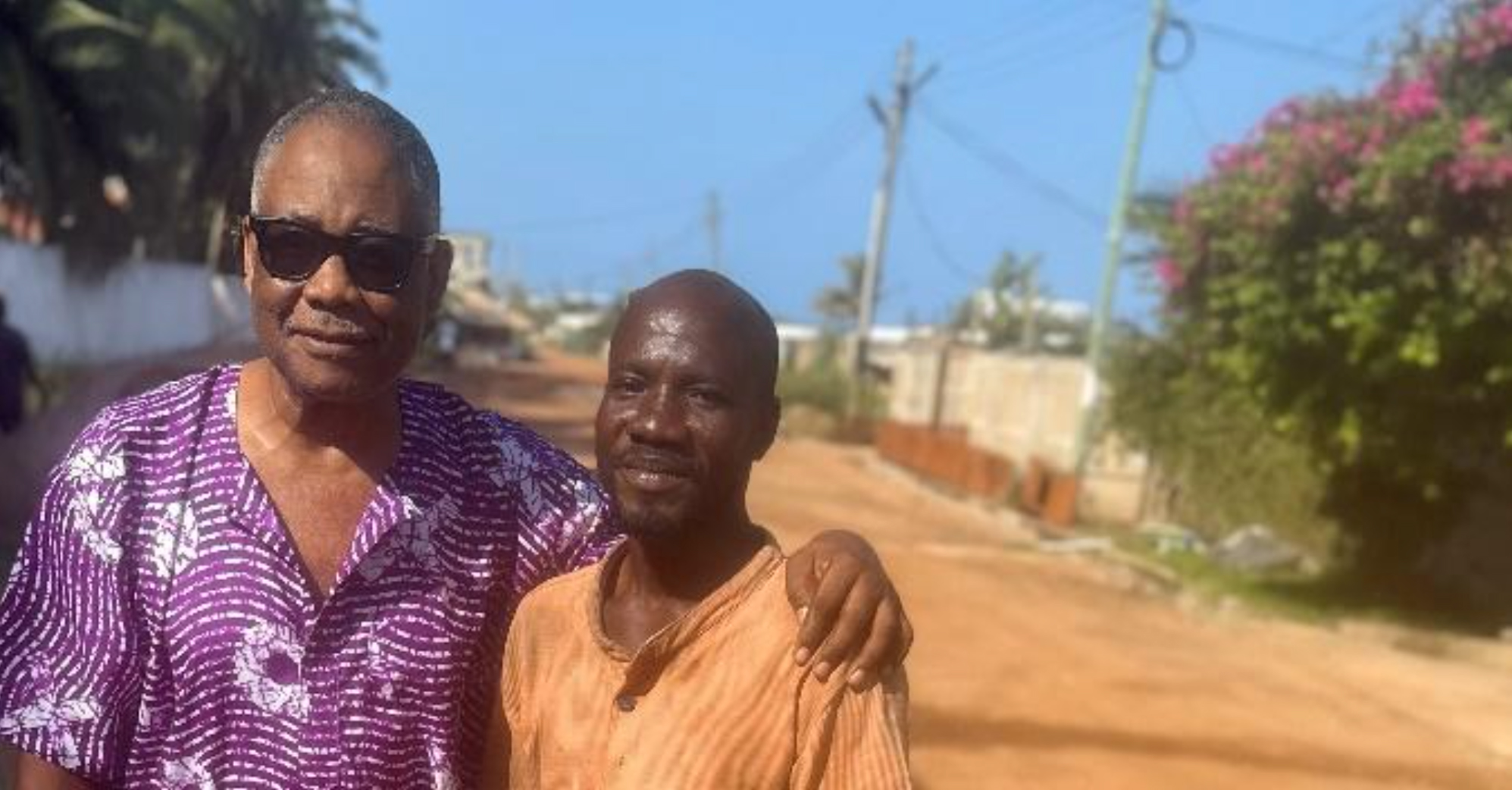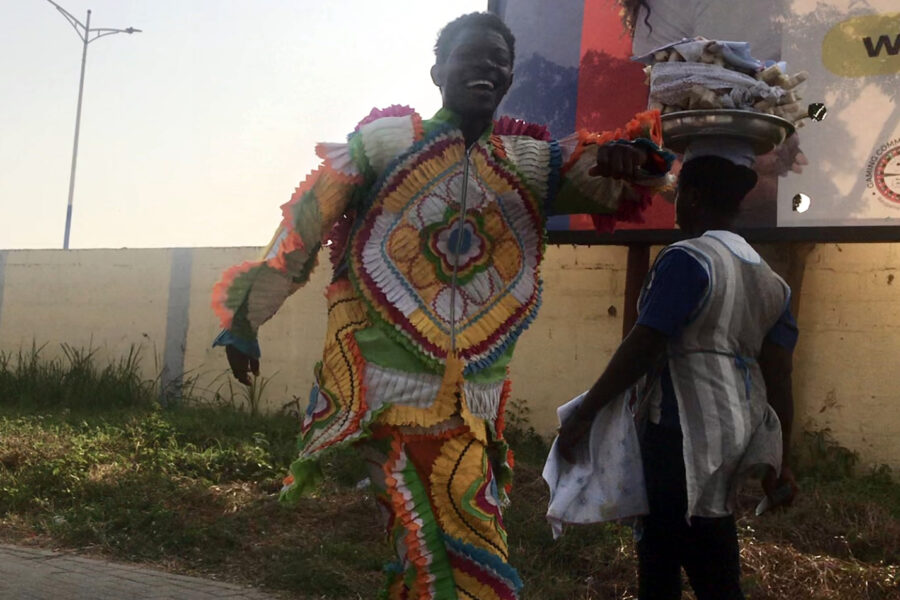(Accra, May 23, 2025) They stabbed him in the back with a pair of scissors for good measure and took his phone. In the apex of daylight, two young men robbed Kofi, a carpenter checking on his job site on my street, a breezy, residential area that lies alongside the beach in Nungua, Ghana, just outside Accra. As a 60-something-plus, African American, glass-half-full, businessman and pastor, making a go of social benefits projects to change the world, I sometimes feel I have seen it all. However, nothing is as it seems.
(Accra, May 23, 2025) They stabbed him in the back with a pair of scissors for good measure and took his phone. In the apex of daylight, two young men robbed Kofi, a carpenter checking on his job site on my street, a breezy, residential area that lies alongside the beach in Nungua, Ghana, just outside Accra. As a 60-something-plus, African American, glass-half-full, businessman and pastor, making a go of social benefits projects to change the world, I sometimes feel I have seen it all. However, nothing is as it seems.
The two thieves slid down a path alongside a gray wall, toward
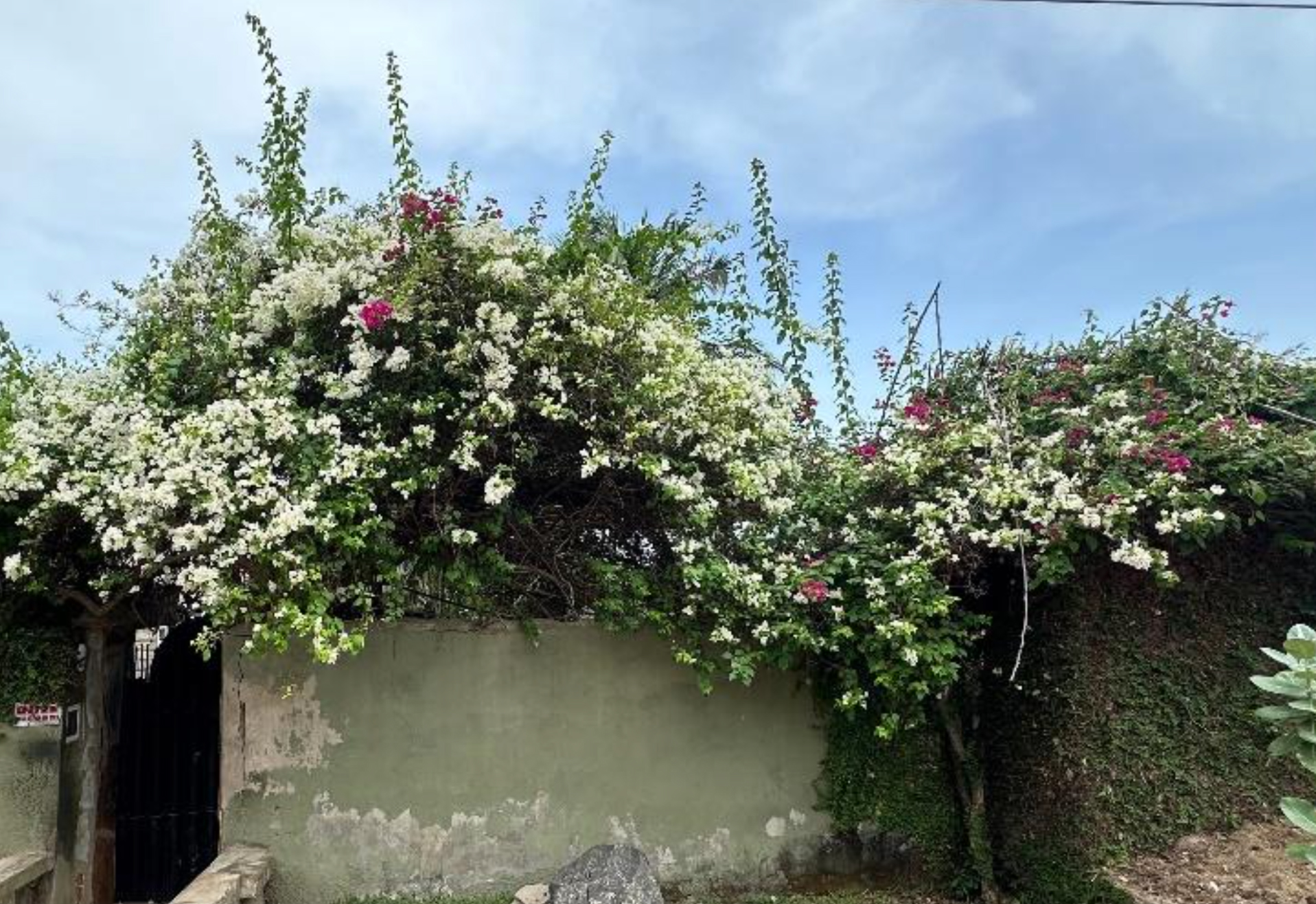
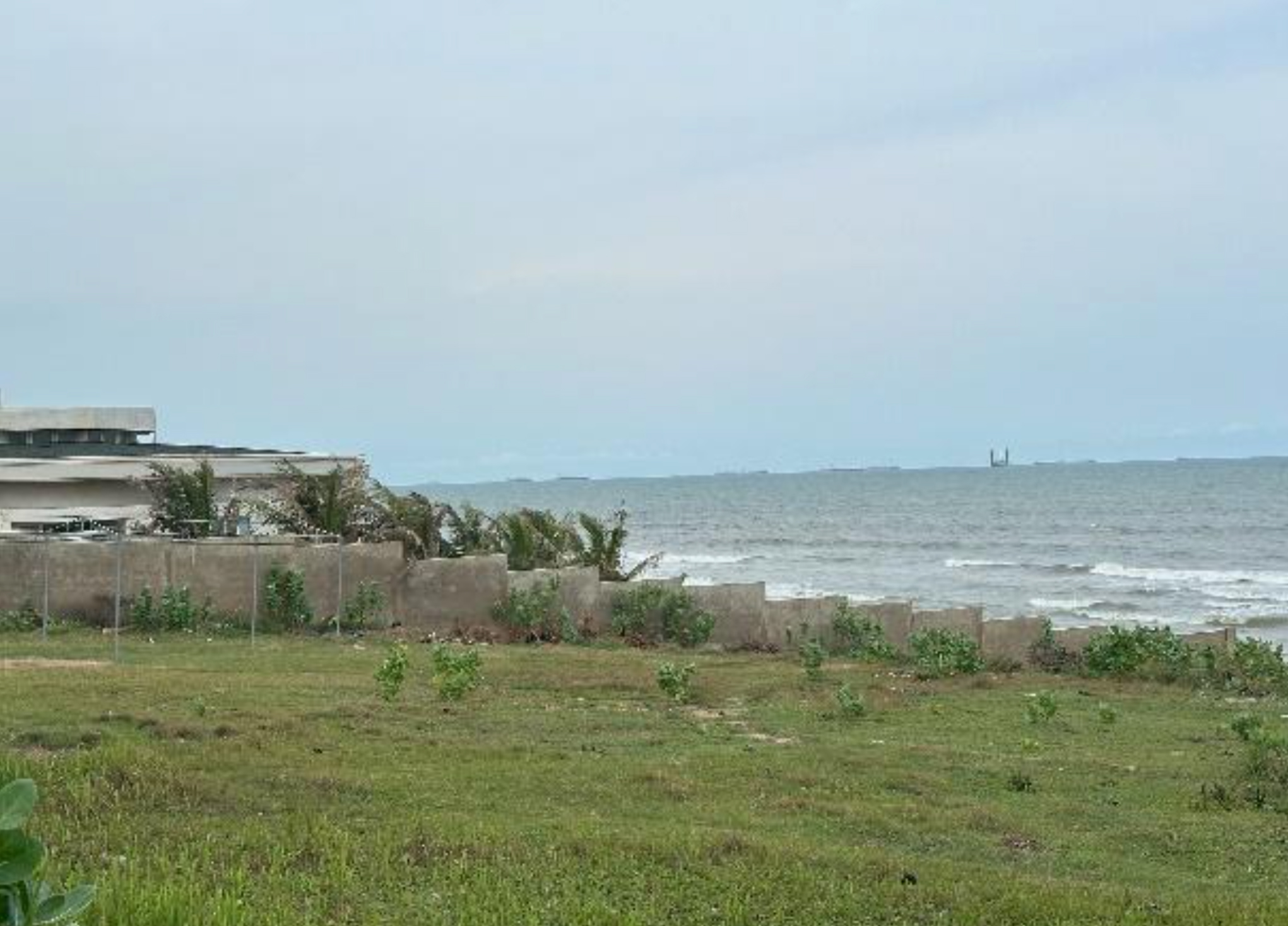
the beach. Kofi screamed for help, “djorulor! djorulor!“ which is a rallying cry of distress and help that calls neighbors to assist, a virtual 911, not to police, but to the community. Two, then three young men dropped their brooms and tools and hurriedly pursued the thieves in response to Kofi’s cry. With sinewy muscularity, they gave chase. One of the robbers melted into the bush with Kofi’s phone, and the other young man ran along the coastline. Within 5 minutes, over 20 more men, women, and four children, with shirt tails and giggles flapping in the wind, appeared out of thin air and pursued one thief. They converged and arrested him. His face pressed into the sand, the adult
pursuers beat him mercilessly with anonymous blows released on his crumpled body, and his dissociated mouth begged for mercy or a chance to explain. And the children watched.
Before giving chase, Kofi had retrieved a cutlass from his job site. Kofi caught up with the melee, with ocean waves adding to the tumult and roar. With his cream-colored golf shirt holding back crimson pools of blood from his back, Kofi kicked and hit the thief, traded the cutlass from his left to his right hand, and struck the thief on the back of his head with the dull edge of the cutlass. Blood gushed from the thief’s nape. The crowd yelled, “Finish him!” They continued to say, “We are tired of these robbers!”
Kofi had mercy. He admonished the crowd to let the police do their job. Some in the crowd went after the police, who came and arrested the thief. A few looked on while others tormented the thief, with sporadic blows and kicks, making him pray for the police to arrive.
Many young men, handsome, strong, brilliant, highly motivated, ages 18-34, languish in search of work or a livelihood. Likewise, many young women, beautiful, courageous, equally brilliant, face similar circumstances, and some engage in “hookups”, transactional sexual encounters typically with men as a way of meeting basic needs. Young people, ages 9- 35, comprise most of Ghana. According to the Ghana Statistical Society, over 18,000,000 or 57% of the 32,500,000 persons in Ghana are between 0 and 25 years old. The number of people between 15 and 24 in Ghana increased to nearly 6.5 million in 2023.
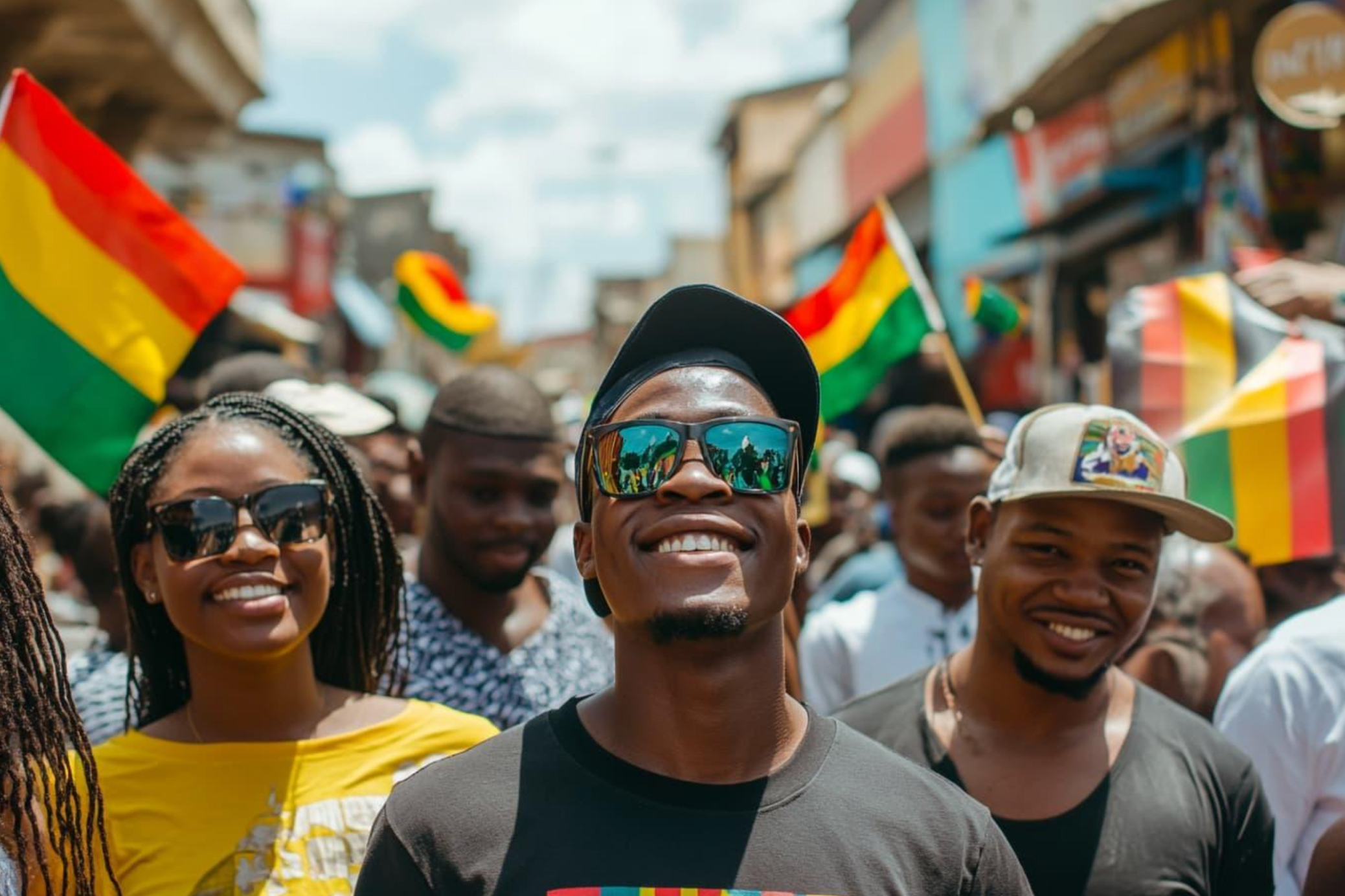
Opportunities for young people are limited. Youth unemployment stubbornly stands at 34%. In relentless droves, young people abandon the village farm for the lure of city lights and money, which seems fast based on what they earn on the farm. While many people propose education as a fix-all for unemployment and youth engagement, many young people would disagree, at least in the short term.
A snapshot of a routine, busy Accra intersection on an average day provides a microcosm and depiction of the national crisis confronting youth. Many college graduates scrambling for work join other commuters and ride the local trotros, artisanal decorated, repurposed vans that tightly pack 30+ people for local transport.
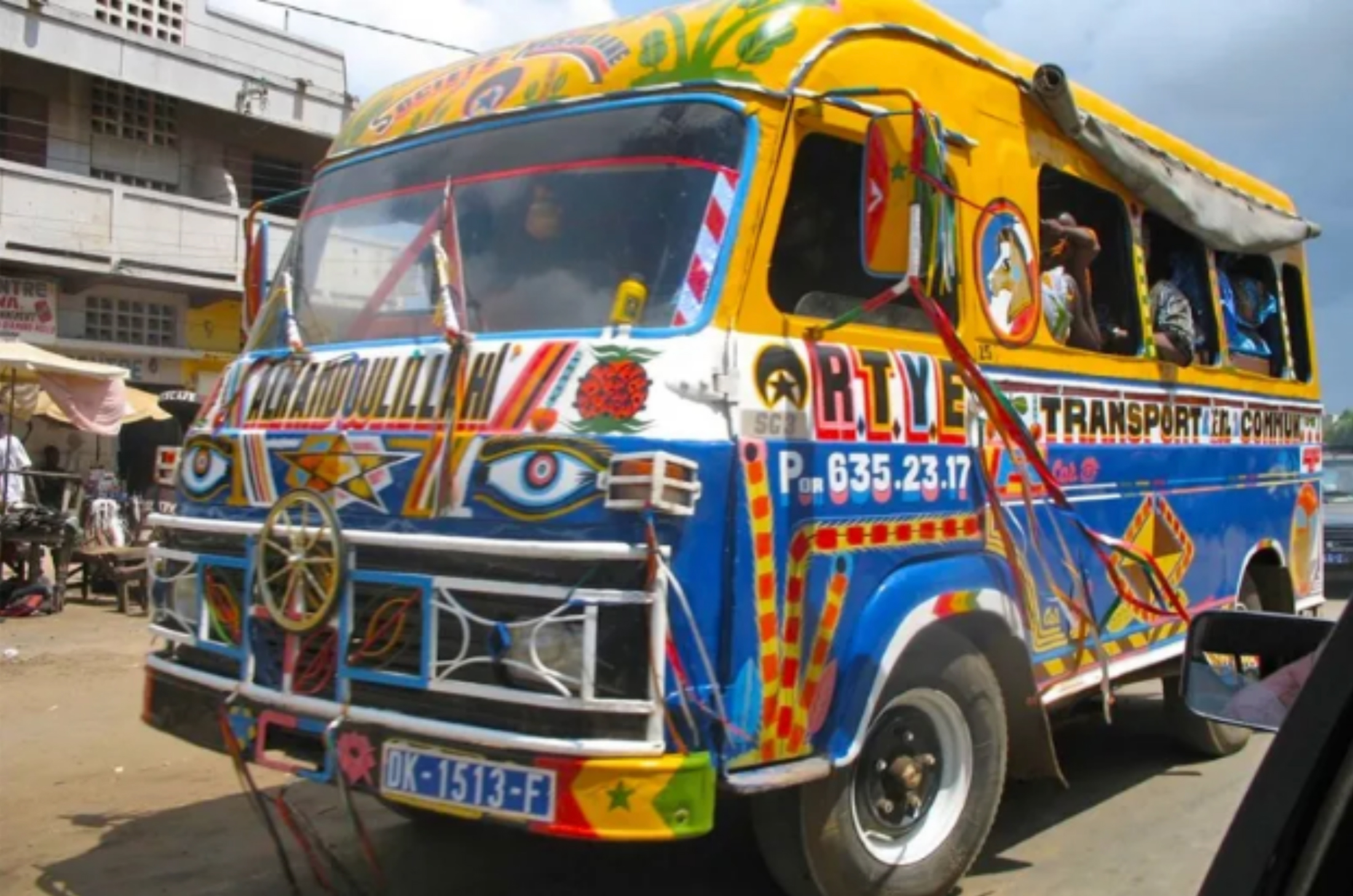
Trotros serve as a populist, national icon and symbol of resilience and hopeful mobility, not only in terms of movement from one point to another, but also migration of circumstance and a better future. Using small, evaporated milk cans with jagged edges to hold the paint, craftsmen employ freestyle, brushes, and bright strokes of blue, orange, green, and red designs, imaginatively incorporating various adinkra symbols and local patterns to adorn the monotone colors of the trotro’s hammered sheet metal panels. Each trotro, detailed with vibrant scenes and images, some from popular youth music culture, including Tupac, from
Hip hop carries a positive message or saying that makes the viewer or rider smile, reflect, and ponder. The street vibe and music fill the traffic air with a cosmopolitan mix of R&B, hip hop, rap, reggae, country/western, world music, and local blends of high life, the Ghanaian sound. Afrobeats comb through the waves of traffic from streaming car radios, each stirring snatches of memories and pleasing distraction, passing the listener’s baton of attention from one radio to the next. Common Ashanti and Fanti proverbs, Biblical and Quranic scriptures, and sayings bearing witty, cultural pearls of wisdom adorn the back of the trotros so the message can linger in the sight of those who follow. Religion is omnipresent in Ghana, where a spiritual verve animates and consecrates all life, even the tailgate of trotros.
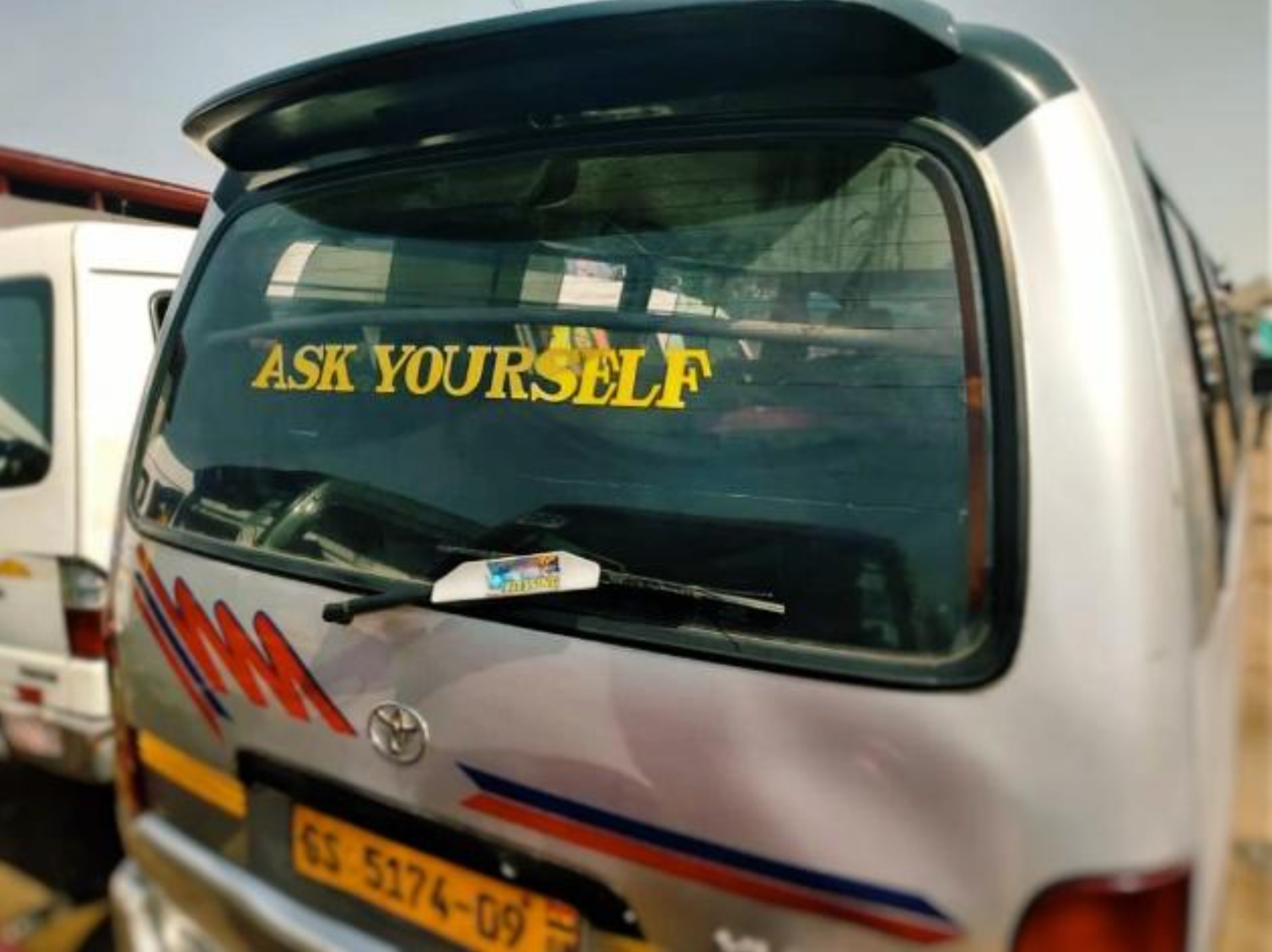
These young people, many of whom are college graduates, alight from the trotro, coming from some hustle, arrive at the family abode, as gainful employment in their fields of study is rare. Fawye, a 22-year-old mineral engineer, explained that graduates like herself must serve one year in national service after graduating from college, earning the equivalent of USD 60 per month. “And after national service ends, jobs are few and far between,” she laments.
Many engineers, teachers, medical doctors, geologists, and people with graduate degrees drive for Uber and delivery services to earn a living. Street vendors, including young children and youth, actively sell items, from tissue to phone chargers, candy, and windshield wipers – items they desperately hope a passerby would want. A 10 year old migrant girl from neighboring Niger, with a comely, dark complexion and a black hijab that delicately frames her face and wide, piercing white eyes, begs for charity from passengers nestled behind tinted windows and air conditioning that insulate them from the brutal sun, sound and pleas. While at a traffic light, women bearing loads of merchandise, such as cold soft drinks and water in baskets on their heads, gracefully dodge traffic, to sell one drink, reaching into their skillfully balanced basket, make change and while barely glancing down, give the product to the customer, and know where every item is positioned without looking, all while negotiating the change of the traffic light from red to green. A young mother performed all of these tasks while balancing her baby, on her back, snuggly wrapped around her with African print cloth. Though the panoramic scene is ephemeral and frenetic, it depicts the complex and complicated life for many young people and others in Ghana, yet brimming with hope and creativity.
The Ghanaian government appreciates the challenges of the youth and the sheer numbers, power, and potential threat of disruption they represent. Youth idealism in Africa and the protest that is fueled by brilliant minds and social media immediately connect Ghanaian youth with news, images, and issues around the world. Thus, occurrences and news of successful activism where youth challenged and pressed their respective governments to make radical changes in Johannesburg, Ouagadougou, and Nairobi prompt youth in Ghana to ask more penetrating questions and demand answers. The government leaders in Ghana held their breath at news of student protests in Kenya in 2024, causing Kenyan President Ruto to cancel a planned tax increase, reshuffle his cabinet, and make concessions to youth demands to quell protests and hold at bay momentarily a tide of upheaval and change.
Longstanding African regimes and leaders backed by France, United Kingdom and the United States gasped as Captain Ibrahim Traore, of Burkina Faso, the 36 year old leader, broke rank with colonial tradition and ousted France and US from its soil, canceling all mining and military access, while delivering promises of a better day to its youth, by becoming the direct seller of the country’s gold, uranium and other precious minerals. During the inauguration of President Mahama in January 2025, in Accra at Black Star Stadium, Ghanaian youth interrupted the procession with 3 minutes of thunderous applause and a standing ovation as President Ibrahim Traore crossed the stage as part of a head of state procession, featuring leaders from over 30 countries. Despite Traore’s ascendancy through a military coup d’etat, his popularity and galvanizing impact registered throughout Africa with the largest youth demographic globally. This thunderous response was not lost on Ghanaian leadership; perhaps they anticipated invigoration of their youth.
The previous administration in Ghana proposed a visionary engagement for cultivating youth as a vital resource and bearers of the country’s future, based on the digitalization of the economy, which makes global connectivity and productivity a reality. Despite spotty, outdated 4G WiFi and an unreliable electric grid that is not nationwide, a high-speed, functioning network and a reliable, nationwide power grid are fundamental requirements for such a program. Also the previous government prioritized education, making primary and secondary education free and compulsory. Classes, however, were overcrowded primarily, teacher salaries were in constant arrears, and when paid, barely kept up with the cost of living, much less with annual inflation rates of 24%, which ravaged the survival net and provision of basic daily requirements.
Nutritious, balanced, hot meals that the Ghanaian government promised primary students started well, then were downgraded to fufu, the local doughy starch, and clear peppered broth, flavored by a sporadic chicken foot, and traces of red palm oil for lunch. In the morning, Tom Brown, a local millet porridge, was served. Soon, though, these meals stopped altogether, and the bowls remained clean, stacked and shelved, as vendors could no longer provide foodstuffs to the schools without payment from the government.
As a long-term view in mind, the previous government administration pitched farming as sexy by promoting stories of millionaires who made their wealth in farming. The government encouraged young people to find their calling and profession in agriculture and its value chain, while helping the country feed itself and become the breadbasket for the region. The current administration doubled down on the initiative of the previous administration and promised a 24-hour, digital economy, which they claim would double the number of jobs and the demand for tech-savvy employees, which would tend to be the youth. This full flag that saluted the hope and once stood at attention, as a stirring and rousing campaign promise, became flaccid in the decelerating winds of reality and delay.
While the government is well-intentioned, it has debt service that consumes most of its operating income, leaving precious little to provide basic services to young people and society. New IMF loans, with conditionalities like boosting taxes and cutting basic services, to pay off old debt that was of questionable merit in the first place. Because of undue influence from superpowers, Ghana becomes the literal dumping ground for computers, used clothes and textile waste, which poison the environment, and surplus agricultural and meat products from Arkansas, Texas, and other locations, which supplant local production. Other issues emerge regarding practices that continue extractive mineral policies that leave countries, such as Ghana, with extraordinary mineral wealth, fertile soil, and sunshine, as beggars on the world stage, needing food to eat.
Ghana must press a reset button that fundamentally changes economic, political, and social systems and relations, where the marginalized are prioritized and the poor cared for. This might mean disruption for the comfortable as a new order emerges regarding the country’s wealth and maldistribution.
The bright corners emerge as the Ghanaian youth master global digitalization and a new lingua franca. Blockchain, social media, crypto, robotics, and AI are part of the architecture of a new global reality that governs in some ways and undergirds in others the production of goods and services.
Thus, the majority of Ghanaian youth who fled the farm and field might return with portable drones, data-driven solutions and apps for forecasting rain and pestilence, and a new understanding of how to use current technology and the vast collection of information to improve market access.
Secondly, Ghanaian youth and others worldwide have found ways to make borders superfluous with ideas, work, creative spaces, political discourse and social intercourse occurring in the net and stored in the cloud. Protests, news, and even trivial concerns forge a globally connected nexus of culture and consciousness, not for sameness, but for a multiplicity of voices, experiences and perspectives. Smartphones essentially become passports to this new age.
The young men that robbed Kofi are both in custody at the local police station. Kofi is back to work, with superficial wounds that only required bandaging and a tetanus shot. In an attempt to circumvent the judicial process and get her son home, the mother of the one arrested offered to return the phone and monies that were stolen, which led the police to identify a larger ring of criminal enterprise in the neighboring area of Teshie. When they are judged, sentenced and serve time, what will become of them? What of others like them who entertain this path? While the young men who robbed Kofi are culpable for their crime, the government and society at large must also file a guilty plea at the arraignment.


